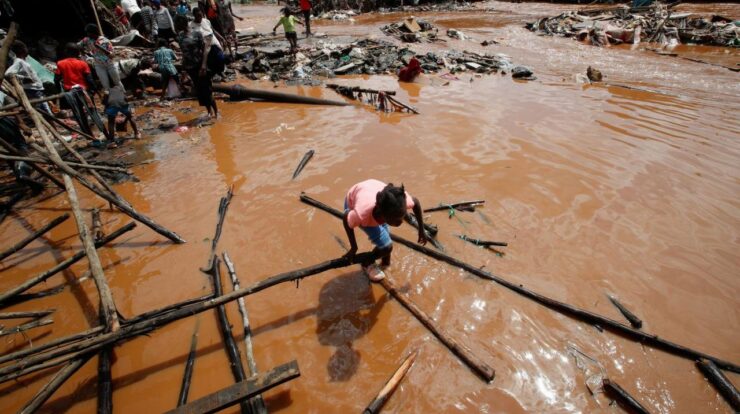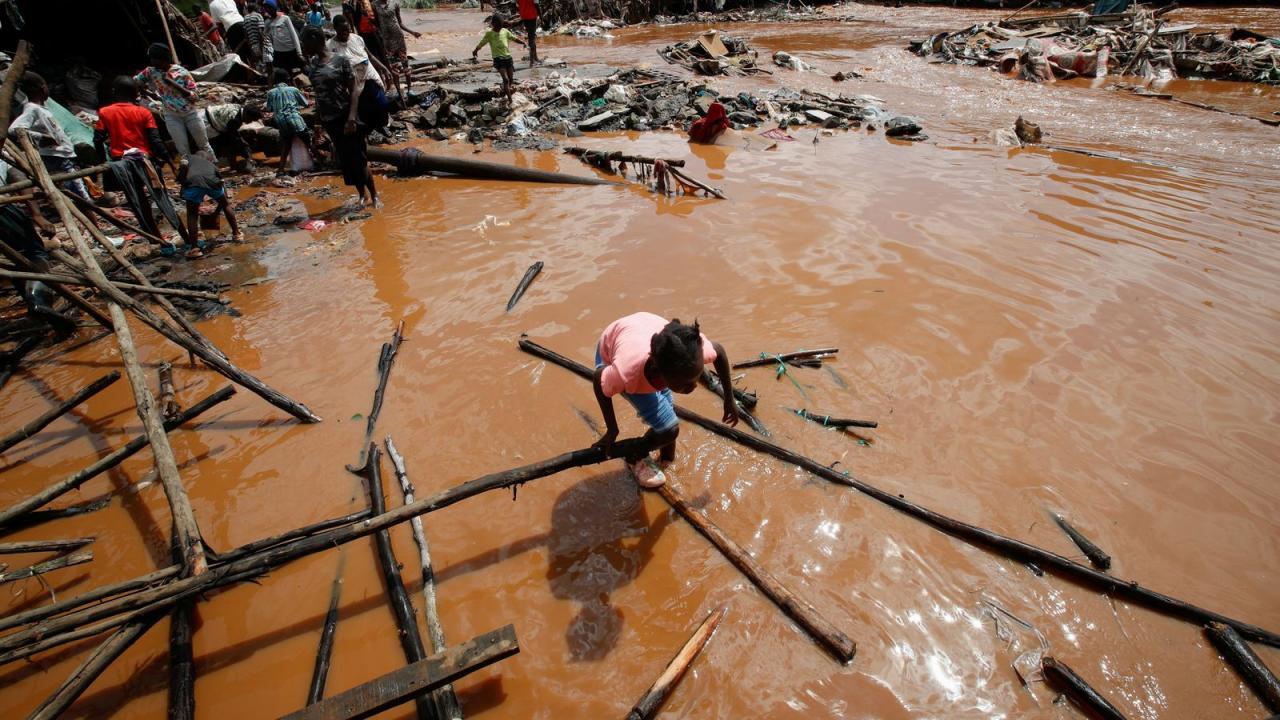
Kenya Nairobi Flooding: A tale of heavy rainfall, poor drainage, deforestation, and urbanization. Explore the causes, impacts, and community efforts to address this ongoing challenge.
The relentless downpours and inadequate drainage systems have transformed Nairobi into a city besieged by floods, leaving behind a trail of damaged infrastructure, displaced residents, and compromised public health. This article delves into the complexities of Nairobi’s flooding crisis, examining the root causes, devastating consequences, and the concerted efforts to mitigate its impact.
Causes of Flooding in Nairobi

Flooding in Nairobi has become an annual occurrence, with heavy rainfall and poor drainage systems being the primary culprits. The city’s rapid urbanization and deforestation have exacerbated the problem, leading to increased surface runoff and reduced water absorption.
Specific areas that are prone to flooding include low-lying areas near rivers and streams, as well as informal settlements built on floodplains.
Impacts of Flooding on Nairobi
Flooding in Nairobi has devastating impacts on the city’s infrastructure, including roads, bridges, and buildings. The displacement of people and loss of property are also major concerns.
Furthermore, flooding can lead to the spread of waterborne diseases, such as cholera and typhoid, posing a significant threat to public health.
Government Response to Flooding in Nairobi, Kenya nairobi flooding
The Kenyan government has implemented various measures to address flooding in Nairobi, including the construction of new drainage systems and the improvement of existing ones.
However, these measures have been criticized for being inadequate and ineffective. The government has been urged to invest more in sustainable urban planning and infrastructure development to reduce the risk of flooding in the long term.
Community Efforts to Address Flooding in Nairobi
Community organizations in Nairobi have played a vital role in flood prevention and response.
These organizations have implemented initiatives to improve drainage systems, raise awareness about flood risks, and provide support to affected communities.
Future Solutions for Flooding in Nairobi
Long-term solutions to flooding in Nairobi require a comprehensive approach that includes sustainable urban planning, infrastructure development, and community involvement.
Innovative technologies, such as green infrastructure and rainwater harvesting systems, can also play a role in reducing the risk of flooding.
Ultimate Conclusion

As Nairobi grapples with the persistent threat of flooding, the need for sustainable urban planning, resilient infrastructure, and community-led initiatives becomes paramount. By embracing innovative solutions and fostering collaboration, the city can work towards a future where flooding is no longer a paralyzing force, but a manageable challenge.
Commonly Asked Questions: Kenya Nairobi Flooding
What are the primary causes of flooding in Nairobi?
The primary causes of flooding in Nairobi include heavy rainfall, poor drainage systems, deforestation, and urbanization.
How does flooding impact Nairobi’s infrastructure?
Flooding in Nairobi damages roads, bridges, and buildings, disrupting transportation and causing economic losses.
What role do community organizations play in addressing flooding in Nairobi?
Community organizations play a vital role in flood prevention and response by improving drainage systems, raising awareness, and implementing community-led projects.





